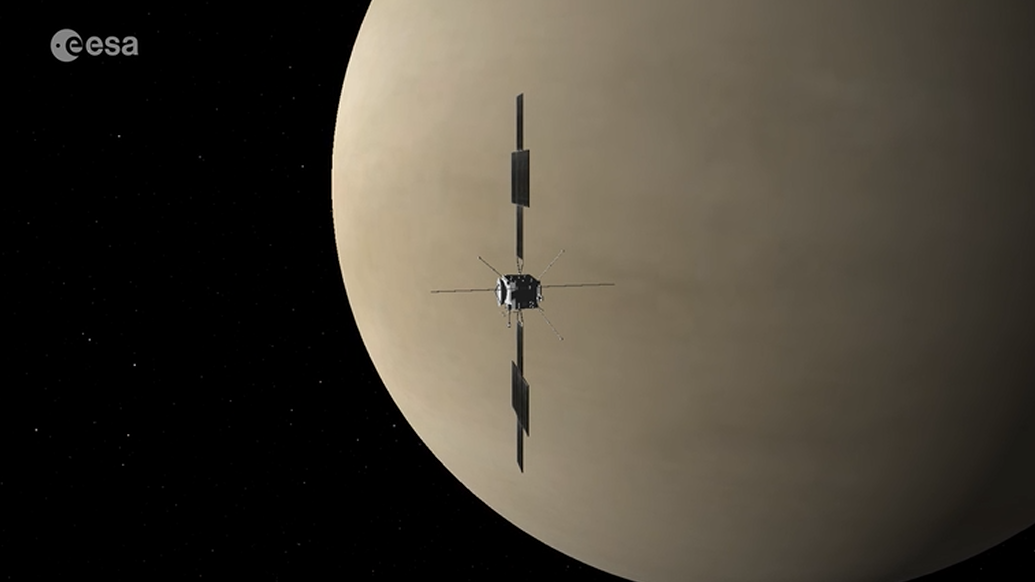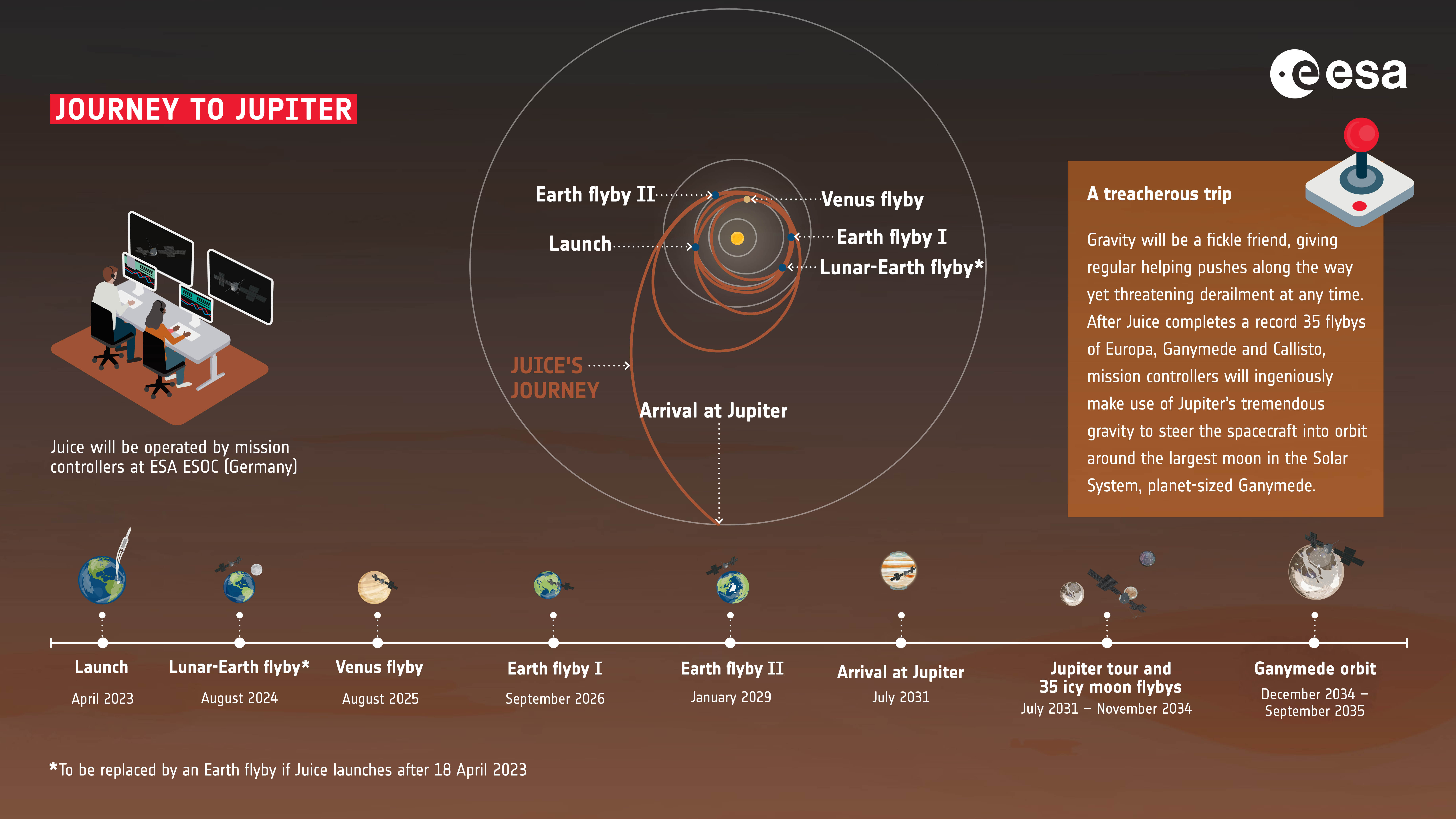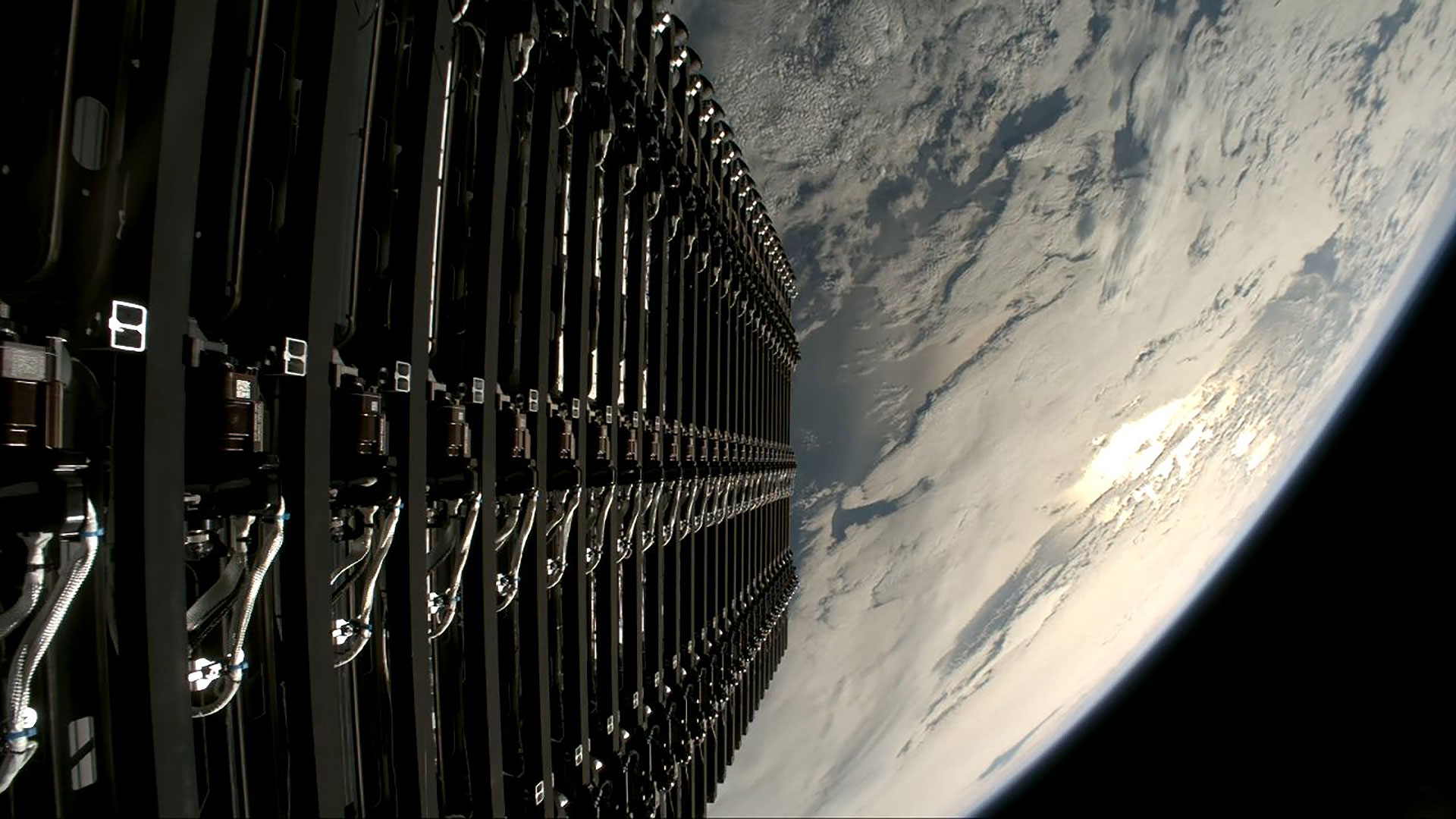Europe regains contact with JUICE Jupiter probe ahead of crucial Aug. 31 Venus flyby

Europe's most advanced interplanetary space probe lost contact with Earth for nearly a full day leading up to a crucial flyby of Venus that will occur on Sunday (Aug. 31).
The European Space Agency's (ESA) JUICE spacecraft launched atop an Ariane 5 rocket from French Guiana in April 2023. The probe is bound for the Jupiter system, where it will study the gas giant and three of its four big Galilean moons — Ganymede, Callisto and Europa.
JUICE (short for "Jupiter Icy Moons Explorer") will reach its target in July 2031 with the help of four gravity-assist planetary flybys, which will increase the probe's velocity and slingshot it toward the outer solar system. The second of those flybys will occur this Sunday, when JUICE buzzes by Venus — but a communications glitch last month put the preparations for that encounter into jeopardy when the probe unexpectedly went dark.
A communications ping with the deep space antenna in Cebreros, Spain, failed to establish a connection with JUICE on July 16, according to ESA.
The routine comms protocol is designed to maintain confirmation of the satellite's telemetry and onboard systems status. When the probe failed to check in, mission operators were left scrambling to troubleshoot the issue as the probe's Venus encounter quickly approached.
"Losing contact with a spacecraft is one of the most serious scenarios we can face," said JUICE Spacecraft Operations Manager Angela Dietz in an Aug. 25 ESA statement.
After ruling out a malfunction in the communications infrastructure on the ground, engineers narrowed the problem down to two possibilities: a misalignment with JUICE's medium-gain antenna or an issue with the comms system's amplifier.
Breaking space news, the latest updates on rocket launches, skywatching events and more!
Mission managers feared that JUICE went into a protective safe mode and were left with two possible paths toward resolution, according to the ESA statement: Transmit commands "blind" to JUICE's presumed location along its flight path, in the hopes of triggering an activation command through a backup low-gain antenna, or wait two weeks for the spacecraft to automatically reset its communications systems. And, given the closing distance between JUICE and Venus, mission operators determined the latter was an untenable strategy.
“Waiting was not an option,” Dietz said. Doing so, she added, "would have meant delaying important preparations for the Venus flyby."
JUICE is currently flying about 125 million miles (200 million kilometers) from Earth, on the opposite side of the sun. At that distance, messages to the spacecraft and back take a 22-minute round trip.
Over the course of 20 hours, mission operators attempted to force-realign JUICE's medium-gain antenna, succeeding after their sixth transmission. Once communications were reestablished, the spacecraft was found to be in a healthy condition.
Technicians traced the malfunction to a glitch in JUICE's timing software that was responsible for powering the probe's communications amplifier on and off at the appropriate times. They issued a fix to prevent the issue from happening again
With communications reestablished, the team was able to begin preparations JUICE's upcoming Venus flyby on schedule.
JUICE's closest approach to the solar system's second planet is expected to occur at 1:28 a.m. EDT (0728 GMT) on Sunday. The probe will steal a small fraction of Venus' orbital momentum, helping propel it toward its next planetary flyby in September 2026, when JUICE will fly a quick loop around Earth.
JUICE's first gravity assist came from an August 2024 pass of Earth and the moon, which set the spacecraft on its current trajectory toward Venus. Another flyby of Earth will take place in January 2029, which will ultimately grant JUICE the velocity it needs to rendezvous with Jupiter in July 2031.
Ganymede, Callisto and Europa are all thought to harbor oceans of liquid water beneath their icy shells, making them excellent places to hunt for past or present signs of alien life. If all goes according to plan, JUICE will spend about 2.5 years in orbit around Jupiter, completing 35 passes of the gas giant's icy Galilean moons.
At the end of the mission, JUICE operators intend to alter the spacecraft's flight path to enter orbit around Ganymede, which will make the ESA probe the first spacecraft to orbit any of Jupiter's moons.
Unlike the stunning visuals transmitted during JUICE's first Earth/lunar flyby, Sunday's flight past Venus won't return any photos of the "morning star" planet. Because of heat limitations, mission operators are powering down the spacecraft's sensors. ESA will likely release a statement following the scheduled flyby.

Josh Dinner is the Staff Writer for Spaceflight at Space.com. He is a writer and photographer with a passion for science and space exploration, and has been working the space beat since 2016. Josh has covered the evolution of NASA's commercial spaceflight partnerships and crewed missions from the Space Coast, as well as NASA science missions and more. He also enjoys building 1:144-scale model rockets and human-flown spacecraft. Find some of Josh's launch photography on Instagram and his website, and follow him on X, where he mostly posts in haiku.
You must confirm your public display name before commenting
Please logout and then login again, you will then be prompted to enter your display name.

